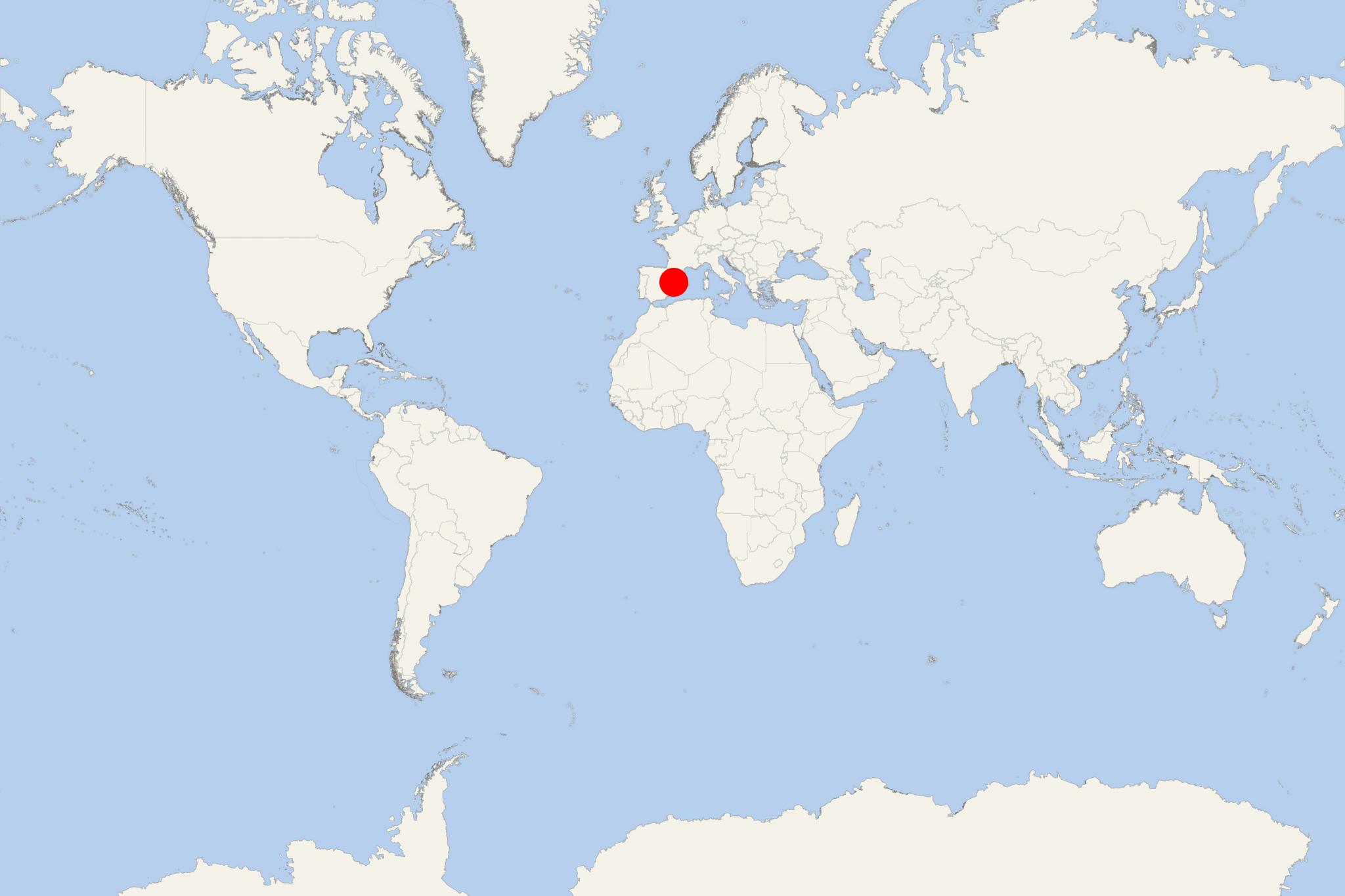Peniscola (Spain Costa del Azahar)
Cruise Port schedule, live map, terminals, news
Region
Mediterranean - Black Sea
Local Time
2025-03-14 18:05
 46°F
46°F 7.8°C

 Gentle breeze
Gentle breeze4.8 m/s
 50 °F / 11 °C
50 °F / 11 °C 38 °F / 4 °C
Port Peniscola cruise ship schedule shows timetable calendars of all arrival and departure dates by month. The port's schedule lists all ships (in links) with cruises going to or leaving from Peniscola, Spain Costa del Azahar. To see the full itineraries (ports of call dates and arrival / departure times) and their lowest rates – just follow the corresponding ship-link.
| Day | Ship | Arrival | Departure |
|---|---|---|---|
| 25 May, 2025 Sunday | 08:00 | 17:00 |
Peniscola is a Mediterranean port town on the Costa del Azahar coast of Spain's Castellón Province (Bajo Maestrazgo region), with population around 8,000. Peniscola is approx 75 km / 45 mi from Castellon de la Plana (the province's capital city) by road to the south/southeast along the coast.
Puerto Peniscola has port locode ESPLN.
Throughout history, the town was known under different names during its occupation by the Phoenician (as Tyreche), the Ancient Greek (as Chersonesos), and the Carthaginians (as Hamilcar Barca) and received city status in 1707. The city walls were built in the late-16th-century (1576-78) being commissioned by King Philip II of Spain (1527-98aka "el Prudente") and designed by Giovanni Battista Antonelli (1527-88/Italian military engineer).
The town is best known for the Castillo de Peníscola. This early-14th-century fortified castle was built by the Knights Templar (1119-1312) on a headland (height approx 67 m / 220 ft) and is connected to the mainland via a tombolo (narrow sandy isthmus). Castillo de Peníscola was constructed in 13 years (1294-1307) and between 1415-23 was the residence of the Antipope Benedict XIII (Pedro Martínez de Luna /1328-1423, aka "el Papa Luna") whose papacy in Avignon (at Palais des Papes) lasted 29 years (between 1394 and 1423). In the following centuries, the Peníscola Castle was garrisoned and sustained damages during military and civil conflicts. Its garrison was disbanded in the late-19th-century (1890).
Attached to the castle is the Ermita de la Virgen de la Ermitana/Hermitage (early-18th-century). Other sites of interest include Ermita de San Antonio/Hermitage (late-17th-century), Artillery Park (an outdoor area of ââcasemates and magazines surrounded by gardens), Museo del Mar (Museum of the Sea, themed on the city's fishing and navigation history), Sierra de Irta Natural Park
Current-day Peniscola is a popular travel destination for both domestic and international tourists, namely for its wide beaches and historical monuments. The town hosts two large-scale annual music festivals during the summer - the Ancient and Baroque Music Festival (in August, since 1996) and the Jazz Festival (in July, since 2004). Castillo de Peníscola hosts the Classic Theater Festival (July-August) and the Classical Music Concerts (September).
